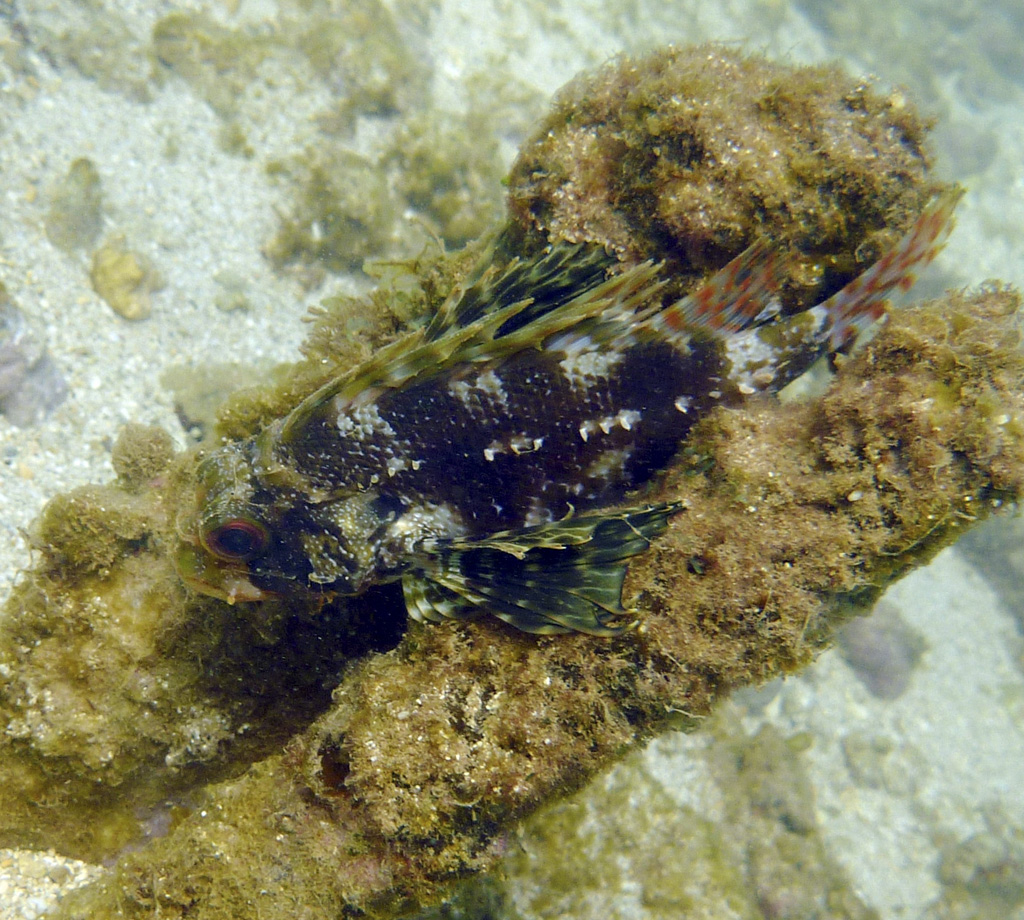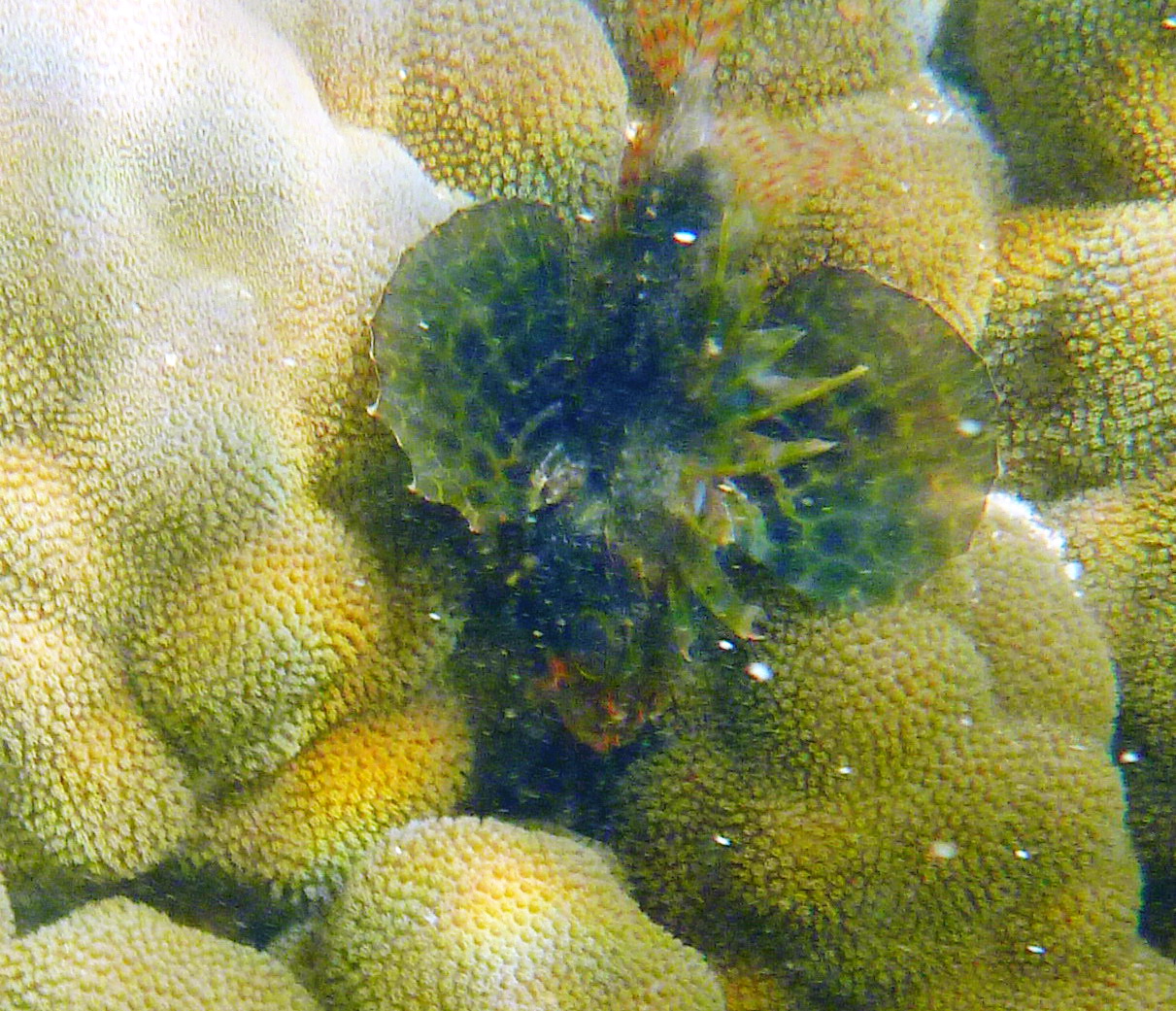Published in the Ocean Watch column, Honolulu Star-Advertiser © Susan Scott
August 27, 2012
When I recently led several California friends on a short swim to see an endemic green lion-fish, the fish made me look good. There it sat in clear water and morning sun, practically posing for pictures.
Swimming directly to a small, camouflaged fish impressed my friends, but it was easy. The area where we snorkeled has a World War II-era metal shaft driven into the hard bottom. I have no idea what the original purpose of this rod-in-the-reef was, but it belongs to the ocean now. Algae growth makes the piece look like it’s wearing a fuzzy brown sweater, and bits of coral stick out like mismatched buttons.
 Photo by Susan Scott
Photo by Susan Scott
Spines on the green lion-fish’s back look like the poisonous spears they are.
My lion-fish views this tiny, artificial reef as cozy quarters, and lately, after a night of stalking crustaceans and fish, the lion-fish comes back to rest in a furrow at the bar’s center.
Green lion-fish, also called Hawaiian lion-fish, are found only in Hawaii’s waters. The green in the name comes from the fish’s green-tinged pectoral fins, which fan out in a manner similar to the flying gurnard I wrote about recently.
To answer a reader’s question, no, flying gunards never leap from the water and fly like flying fish. Nor do lion-fish. In both species, fanning out the winglike, eye-catching fins helps the hunters herd their prey.
In the case of lion-fish, the fin-spreading may also mean, “Back off. I’m packing.” These members of the well-named scorpionfish family have venomous spines on their back and bottom rear fins.
Green lion-fish are poor swimmers, often moving in hops, and grow to only about 6 inches long. The fish compensates for slow speed and small size by carrying a big stick.
Of Hawaii’s 28 scorpionfish species, the green lion-fish and its endemic cousin the Hawaiian turkey fish (aka the red lion-fish) are the two most venomous.
Of the world’s 350 or so scorpionfish species, stonefish possess the most toxic poison. Fortunately, these fish aren’t found in Hawaii.

The danger in stonefish, and other scorpionfish that sit on the bottom pretending to be rocks, is accidentally stepping on one. Lion-fish, however, can attack if threatened. The fish lowers its head, arches its back and points its stiff back fins forward. In a lightning strike, the intruder gets the excruciating message. The pain, somewhat eased by immersion in hot water, can last for hours, the swelling for days.
My resting lion-fish eyed us with its big red eyes as if to say, “I don’t want to hurt you, but …” We admired the fish’s beauty from a distance and then left it to rest in its bed of steel.